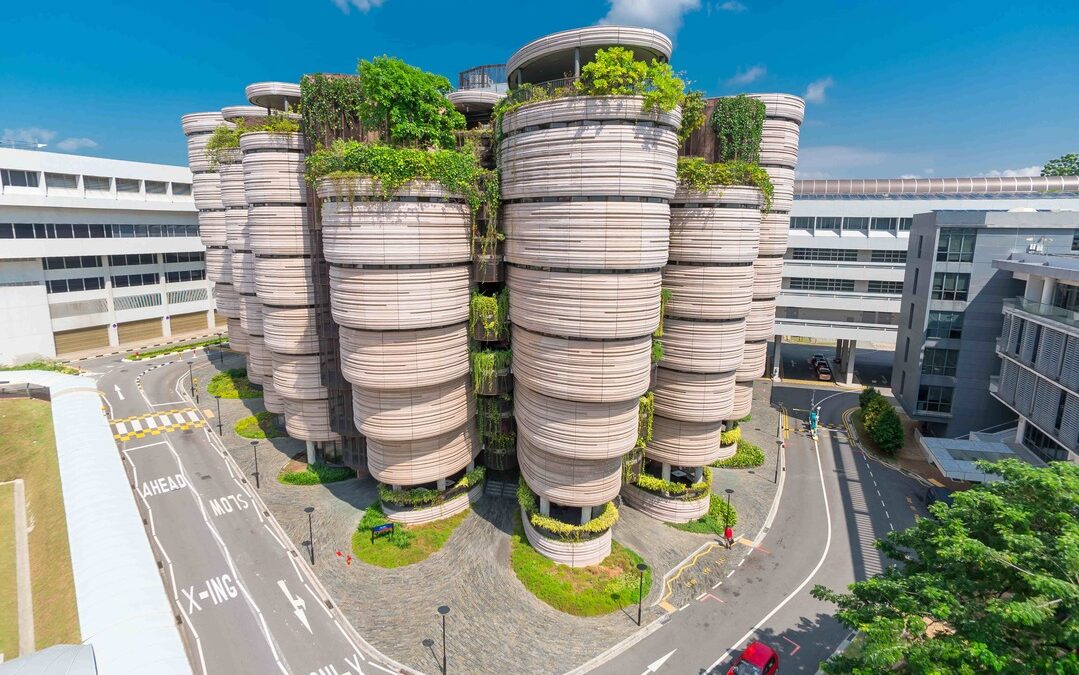Singapore’s NTU Unveils 3D Concrete Printing Innovation to Combat Carbon Emissions
NTU Singapore unveils 3D concrete printing tech that captures carbon, boosting sustainability and material strength.
Singapore’s Nanyang Technological University announced on Monday a 3D concrete printing method that captures and stores carbon dioxide, marking a significant step toward reducing the environmental footprint of the construction industry.
Detailed in the journal Carbon Capture Science & Technology, the technique injects CO2 and steam into concrete while getting printed, sequestering the greenhouse gas while enhancing the material’s strength.
Cement production, a cornerstone of the building industry, contributes 1.6 billion metric tons of CO2 annually, or about 8 percent of global emissions.
“Our newly developed 3D concrete printing system offers a carbon-reducing alternative by not only improving the mechanical properties of concrete but also mitigating the construction sector’s environmental impact,” said Professor Tan Ming Jen, the project’s principal investigator and a faculty member at NTU’s School of Mechanical and Aerospace Engineering.
A Sustainable Revolution
According to the statement, the research team demonstrated the ability to turn a significant pollutant into a valuable resource by letting the injected CO2 react with the components in the concrete, solidifying the structure. Simultaneously, steam enhanced CO2 absorption, increasing the concrete’s printability, strength and durability.
In laboratory tests, this method yielded impressive results:
- A 50 percent improvement in printability, making the concrete easier to shape.
- Up to a 36.8 percent boost in compressive strength.
- A 45.3 percent increase in bending strength.
- A 38 percent rise in carbon dioxide absorption compared to traditional 3D printing methods.
“This innovation shows how capturing carbon dioxide and using it in 3D concrete printing could lead to stronger, more sustainable buildings,” said Dr. Daniel Tay, a co-author of the study and a research fellow at NTU.
Bridging Sustainability and Performance
The new technology builds on prior work by NTU’s Singapore Centre for 3D Printing and collaborators at Saudi Arabia’s Aramco. It holds potential for broad application, from reducing construction timelines to creating materials that offset carbon emissions from power plants and other industrial sources.
Lim Sean Gip, a PhD candidate and lead author of the study, noted the urgency of integrating such solutions into the industry. “We are at a critical time where the world is accelerating efforts to meet climate change targets,” he said.
The team has filed a joint US patent application for the system and plans to optimize the technology further, potentially substituting waste gases for pure CO2 in the future.
A Blueprint for Change
The development highlights an increasing sync between advanced technology and environmental responsibility in the construction sector.
“This is a promising step toward achieving global sustainability goals,” said Professor Tan.
If implemented at scale, the innovation could reshape construction practices worldwide, proving that even the most carbon-intensive industries can adapt to changing climate demands.
Also Read:
UN Report Urges Immediate Decarbonization of Emission-Heavy Sectors

